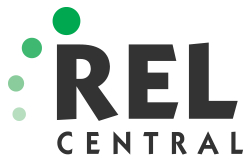Anecdotally speaking, the education community tends to view rural students and students from resource-challenged households as not having the same level of access to quality learning opportunities as students from urban centers or high-income households. But is this actually true?
As part of the Rural Education Research Alliance, REL Central worked with educators in our region to measure students’ access to and participation levels in dual enrollment programs in both schools and districts. Dual enrollment is widely seen as a key component of successful college and career readiness, making access to and participation in dual enrollment programs useful indicators of a good overall strategy for preparing students for life after high school.
Our report Understanding Access to and Participation in Dual Enrollment by Locale and Income Level explores the rates of dual enrollment access and participation, both in our region and across the country. Findings in the report indicated that schools (82%) in the REL Central region — which is less urban than most regions in the country — offer access to dual enrollment programs at a rate higher than the national average (78%). Also, 89% of the students in our region attended schools that offered dual enrollment programs, which is higher than the national average of 83%.
Somewhat surprisingly, and contrary to popular belief, the data also showed that students in rural areas (89%) of the REL Central region had more access to dual enrollment programs than their urban peers (84%). Rural students also participated (31%) in dual enrollment programs more than students living suburbs, (26%), or cities (20%). Furthermore, students attending schools with a higher percentage of students from low-income households were found to have greater access (90%) and be more likely to participate (30%) in dual enrollment programs when compared to students from attending schools with a higher percentage of students from affluent households (82% access and 19% participation).
Although these data are encouraging, the overall percentage of students, including those in rural areas, in the REL Central region who participated in dual enrollment programs was only 27%. This is higher than the national average of 21% but nonetheless shows room for improvement. Given these findings, state and local education agencies in the region might focus on encouraging more participation and developing methods to better educate students about the benefits of dual enrollment.
We hope the findings in our report will help education leaders in our region as they plan their next steps in enhancing college and career readiness efforts at the state and district levels. For instance, education leaders in Colorado plan to use the findings as a starting point to further examine how to increase equitable access to concurrent enrollment programs. To learn more about the findings, download Understanding Access to and Participation in Dual Enrollment by Locale and Income Level.





